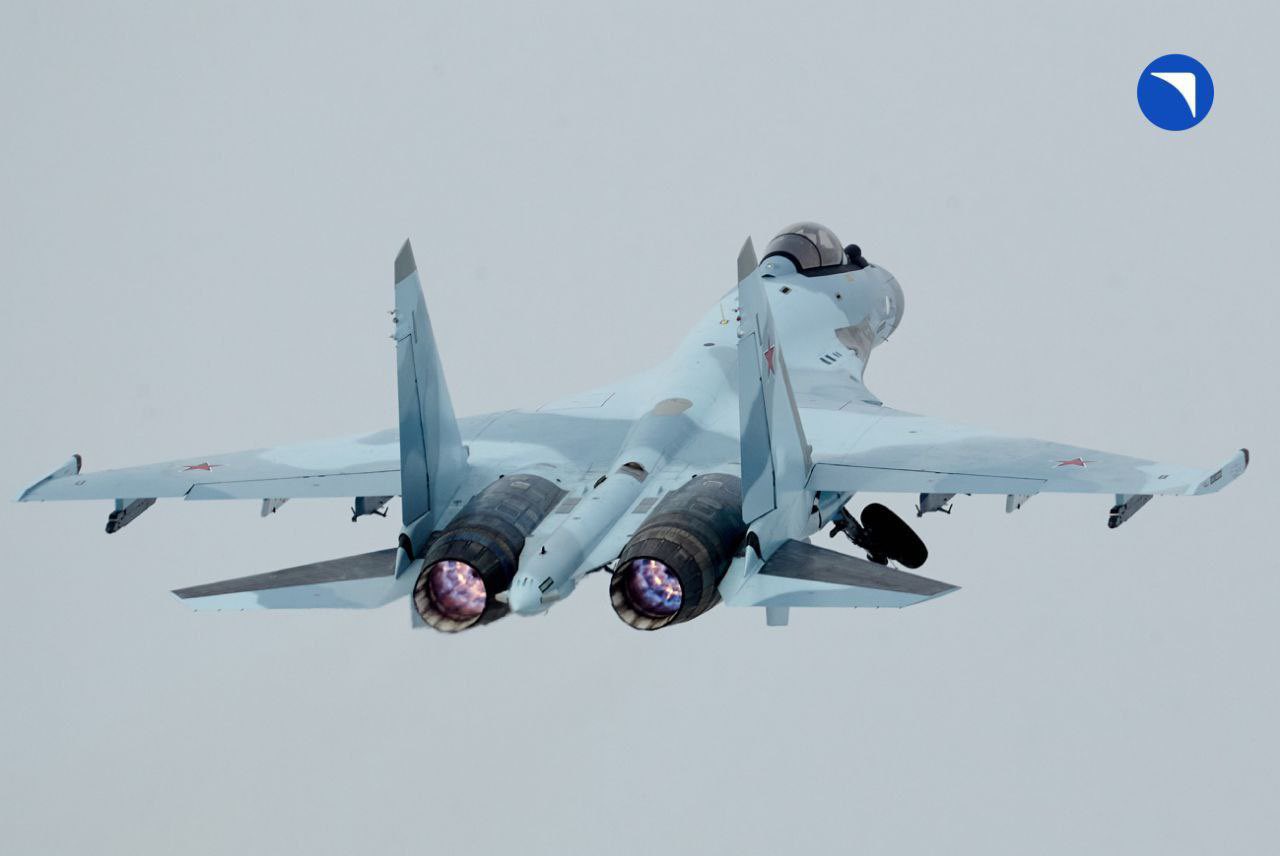Russia’s advanced Su-35S fighter jets successfully provided cover for a landing detachment of ships in the Sea of Japan as part of the ongoing “Ocean-2024” strategic command and staff exercises.
On September 15, the Russian Ministry of Defense announced that two Su-35S fighters intercepted a simulated enemy aircraft over neutral waters in the Sea of Japan.
An anti-submarine aircraft from the Pacific Fleet Naval Aviation played the role of the enemy aircraft. On reaching the target area, the Su-35S fighters classified the mock threat and engaged it using long-range air-to-air missiles.
Following the interception, the fighters engaged in air combat drills with simulated enemy fighters, further honing their combat skills.
These exercises form part of the larger “Ocean-2024” drills, a massive exercise in which more than 400 warships, submarines, and auxiliary vessels participated.
Also, over 120 aircraft and helicopters from the Navy’s aviation fleet, approximately 7,000 units of military equipment, and 90,000 personnel are involved in this multi-faceted operation.
Meanwhile, another key element of the exercise was the deployment of Russian MiG-31BM fighters. These high-altitude interceptors were tasked with providing cover for a Pacific Fleet naval strike group in the Sea of Japan.
Like their Su-35S counterparts, the MiG-31BM successfully intercepted a mock enemy target, demonstrating Russia’s focus on strengthening air and naval defenses.
The joint Russian-Chinese naval forces also played a major role in the drills. Ships from the Russian Pacific Fleet and the People’s Liberation Army Navy conducted live-fire drills, targeting simulated enemy ships in the region.
The joint drills also concentrated on countering the growing threats posed by unmanned boats and FPV drones, which have emerged as highly effective weapons in modern warfare.
In the ongoing Russia-Ukraine war, these types of drones have demonstrated their ability to inflict considerable damage on the enemy’s assets, making them a key focus of defense strategies.
To address these evolving threats, the drills incorporated the use of Ka-29 amphibious helicopters, anti-sabotage boats, and advanced electronic warfare systems, showcasing a comprehensive approach to countering unmanned and remotely operated technologies.

Russia’s Su-35S Fighter Jet
The Su-35S, an advanced multirole fighter, is a cutting-edge evolution of the iconic Su-27, a symbol of Russian military aviation from the late 20th century.
The Su-35S boasts remarkable advancements that enhance its performance in both close-range and long-range air combat.
One of the Su-35S’s key strengths is its modern digital systems, which allow it to seamlessly communicate and coordinate with other aircraft in complex, multi-jet missions. These capabilities provide an advantage in modern aerial warfare, where coordination and real-time intelligence are essential.
Additionally, according to Russia’s state corporation Rostec, the Su-35S has no angle-of-attack limits, meaning it can execute extreme maneuvers, including highly agile and supermaneuverable actions that give it a unique edge over most of its adversaries.
Among its most notable maneuvers is the ability to perform a minimum-radius dead loop—a nearly on-the-spot turn—that offers a tactical advantage in dogfights. This is more than just an impressive display of aerial agility; it is a combat technique that can decide the outcome of an aerial engagement.
The current Su-35S first emerged as the Su-35BM (Bolshaya). Modernization) around 2005, following a comprehensive modernization program aimed at revitalizing the existing Flanker E fleet.
The Su-35BM was designed to excel in both Beyond Visual Range (BVR) and close air combat. It employs a suite of smart air-to-surface munitions and sophisticated avionics to maintain superiority over international competitors.
Despite its advanced features, the Su-35S has faced multiple challenges in the Ukrainian theater. The Su-34s are regarded as one of the most advanced supersonic strike aircraft in the Russian Air Force. However, several Su-35s have been lost in combat, including one off the coast of Crimea in March.
According to the Dutch open-source intelligence defense analysis website Oryx, Russia has lost seven Su-35 fighter jets since February 2022. For Russia to sustain its ongoing invasion of Ukraine, maintaining the operational readiness of its Su-35S aircraft will be crucial.
The fighter jets have primarily been assigned to close-air-support missions, flying at high speeds toward the front lines and releasing KAB precision glide bombs from distances of up to 25 miles away.
This allows them to strike targets while maintaining a safe distance from enemy defenses. As the Ukraine conflict continues, the performance and survivability of these advanced fighters will be a key factor in Russia’s air power strategy.
- Contact the author at ashishmichel(at)gmail.com
- Follow EurAsian Times on Google News




